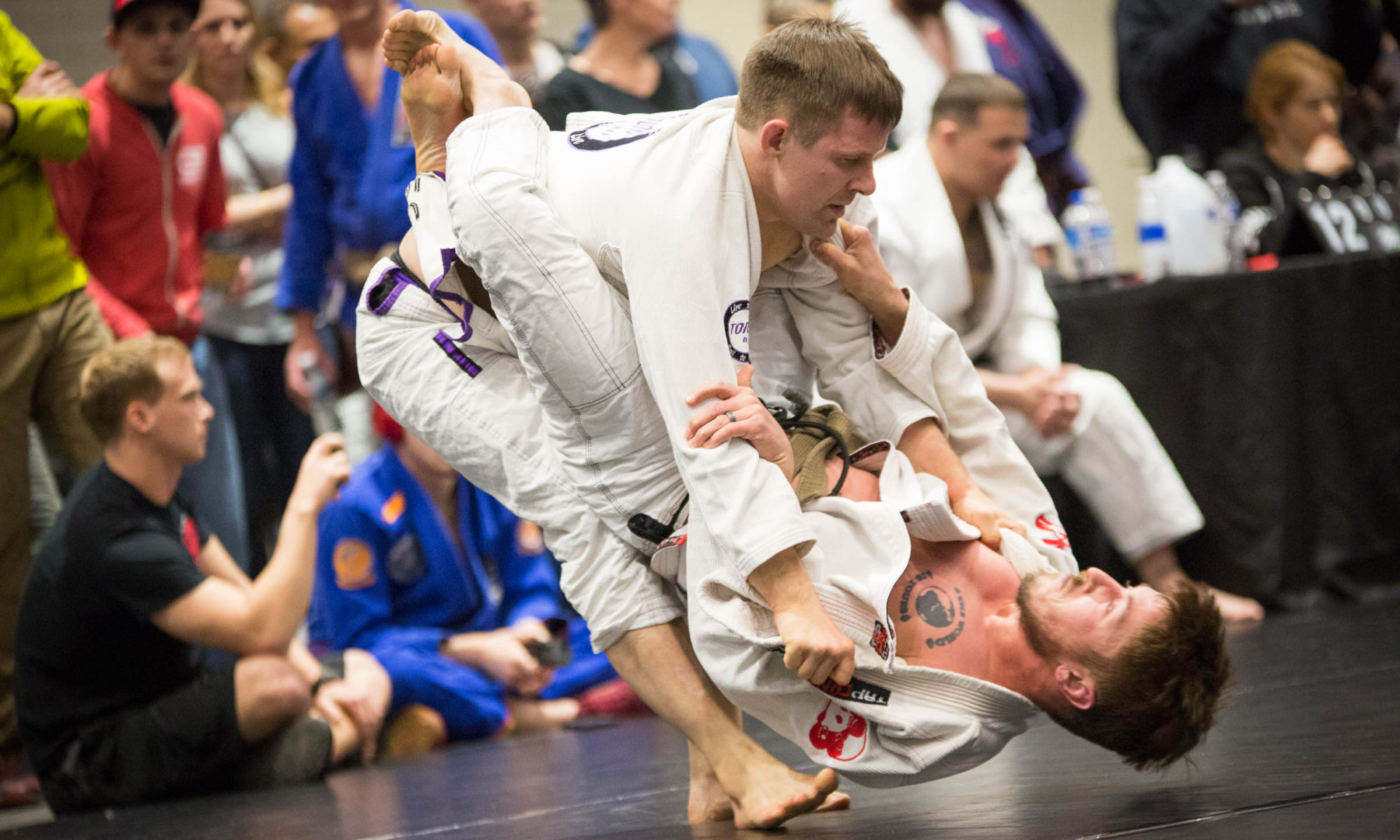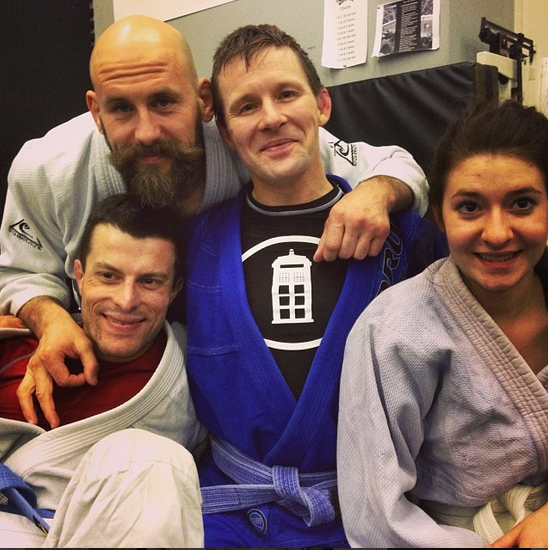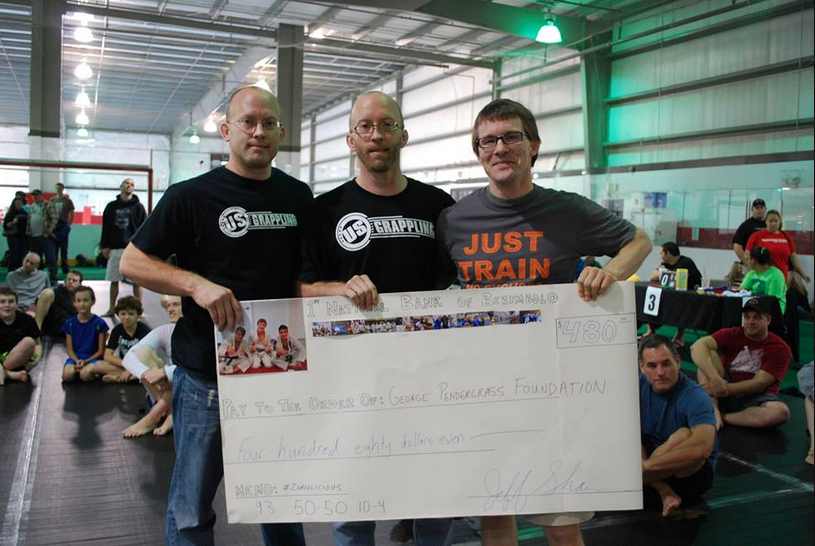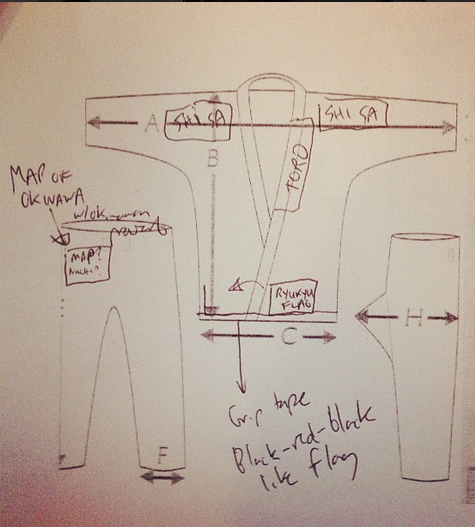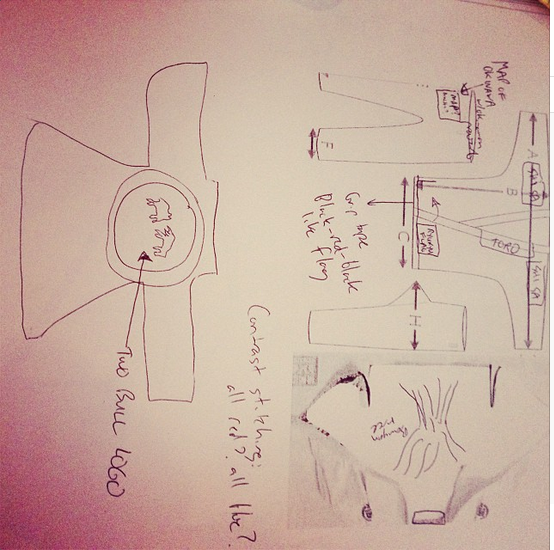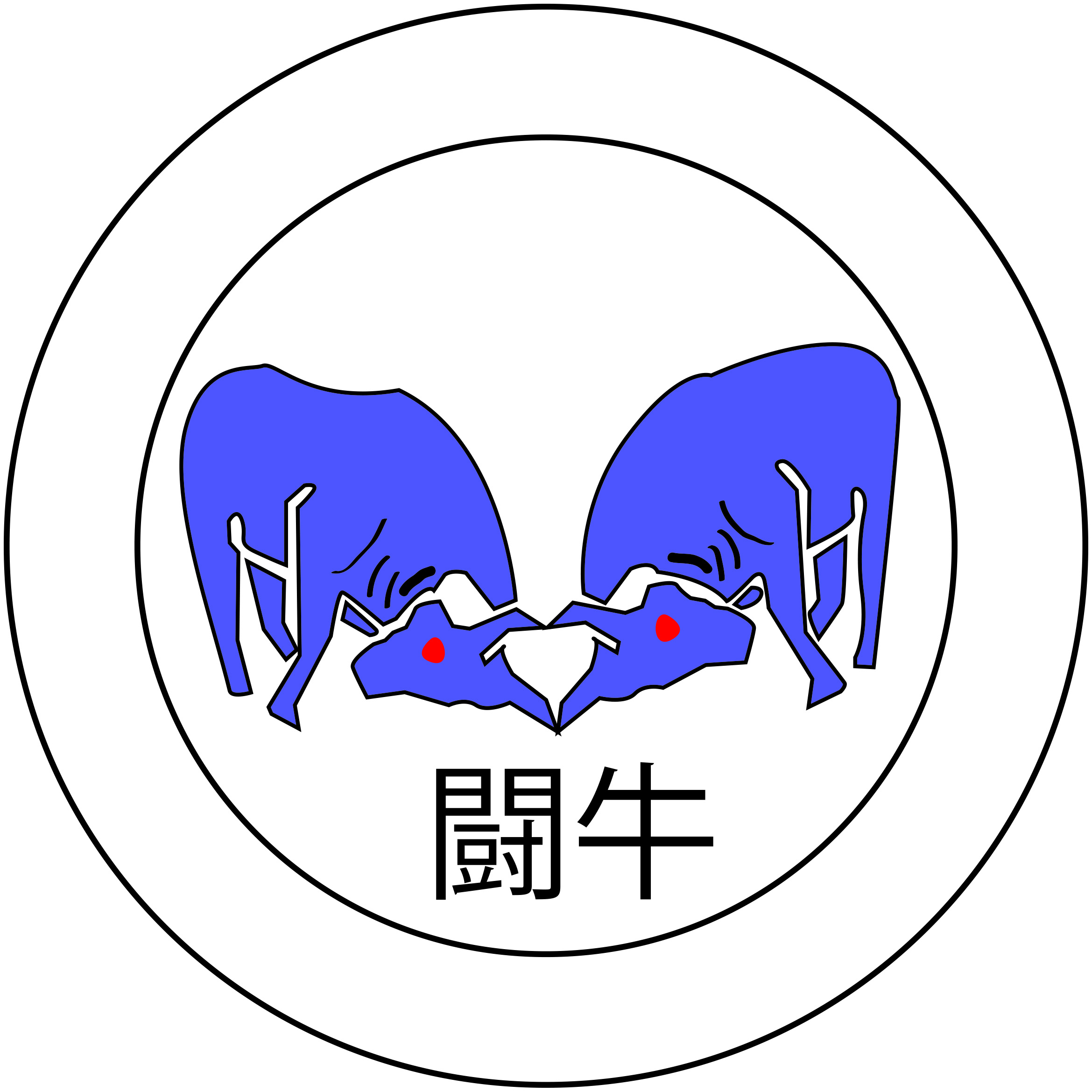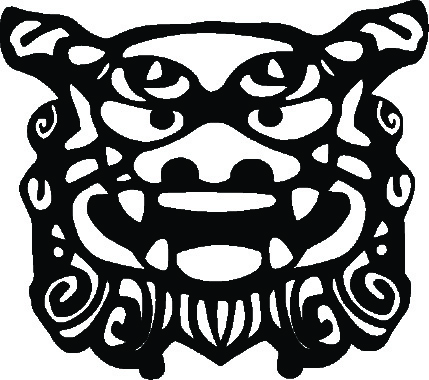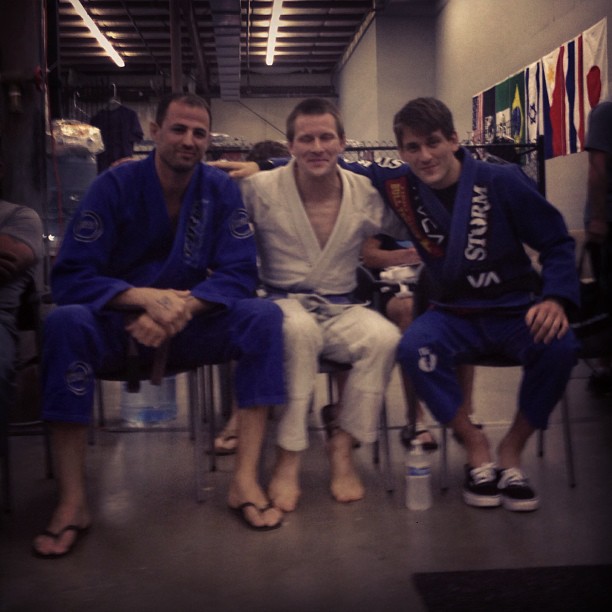For the first time, I’m playing an unfamiliar role with a jiujitsu event: matchmaker.
While incredibly fun, it has definitely given me a new appreciation for the people in the jiujitsu and mixed martial arts community who do this all the time. Hence, let me start by saying “thank you” to the local folks who make great cards happen all the time.
As I write this, we’re two weeks out from the Toro Cup, and much of the hard work has been done. During this calm before the storm, I wanted to do a quick preview post explaining where the idea came from and previewing the matches. I’m not going to make predictions, but I would like to say something about why I’m interested in each match.
The idea for the event came during the last Metamoris card. I love watching high-level matches, but I also love gi jiujitsu — and it seemed like too few superfights were happening in the gi. So we at Toro BJJ decided to do a day focused on matches taking place in the kimono. My goal for the event was to make matches that would be exciting for people, would represent a wide array of schools, and would give folks that haven’t had a chance to compete against each other the opportunity to do so. At the core of this event are some huge jiujitsu fans (me and Boomer from Cageside MMA) wanting to see certain great matches happen.
I’m confident we’ve done so — and I hope everyone enjoys the day. 13 different schools are represented among the 11 matches! (Let me also say we got very close to making two black belt matches that would make people say “wow,” and we’ll hopefully do both of those for Toro Cup 2). If you’re interested in checking the event out live or online, here’s all you need to know.
Now, the fun part: the matches.

Unfortunately, one of the matches I was most excited about — Jason Jelen vs. Adam Jetton — isn’t happening. Both competitors unfortunately sustained injuries. I’ve been watching Adam since I was a white belt, and he’s a fierce and mentally tough competitor. Jason Jelen is a black belt instructor at Gracie Raleigh, and he’s tremendous: he’s got a great grasp of both old and new school technique, and I can’t wait to see him compete at black belt. Hopefully they have speedy and successful recoveries: I know I’m not not the only one who really wanted to see this match.
We kick off the event with this one:
JOHN “BAGELS” TELFORD VS. JOSEPH CARROLL
https://www.youtube.com/watch?v=1KRz6x71MOo&feature=youtu.be
Because we wanted to start the show with an exciting match, we’re offering this one. John Telford has been tearing up the competition circuit at purple belt — and with a style that’s entertaining to watch. Joseph Carroll earned his black belt in January, is a regular competitor and has a reputation for exciting matches as well. I acknowledge that it’s unconventional to have a match with this belt discrepancy, but both guys wanted to do it, and neither guy cared about weight. It should be a fun contest.
ADAM SONG VS. MATT MESSER

This is an interesting match in the gi between two brown belts with lots of cage experience. Matt “The Masher” Messer is one of the state’s most popular MMA fighters for good reason: his aggressive style and his ability to always push forward. Adam “Soul Horse” Song of Ring Lords Vale Tudo has been training MMA since 1999. But both of them also love gi technique. Messer just had a brown belt superfight in Charlotte that went to a draw: I know Song has been training hard for this, and I’m looking forward to it.
JAKE WHITFIELD VS. NEAL WEAVER
This is the only no-gi match on the card. I wanted to have a card full of entirely gi matches, but when the opportunity came to see these two compete, we had to make it happen. Both are prominent local instructors, Jake at Triangle Jiu-Jitsu in Goldsboro, Neal at TFTC Academy. Besides his accomplishments in gi and no-gi jiujitsu, Jake is also one of North Carolina’s most successful MMA fighters. These two have never competed against each other, and this is probably the match I get the most messages about from other fans of grappling. Don’t miss it.
BRAD WOLF MCDONALD VS. BRAD ACOSTA
A purple belt match, this contest has the makings of a good one. Brad Acosta is an active competitor who performed very well in a recent gi superfight at the Bull City Brawl: Brad McDonald has been a well-respected practitioner for a long time, but hasn’t competed recently. Both of these guys are fun to watch, so it’ll be interesting to see how they stack up against each other.
JOSEPH LEE VS. GUY PENDERGRASS
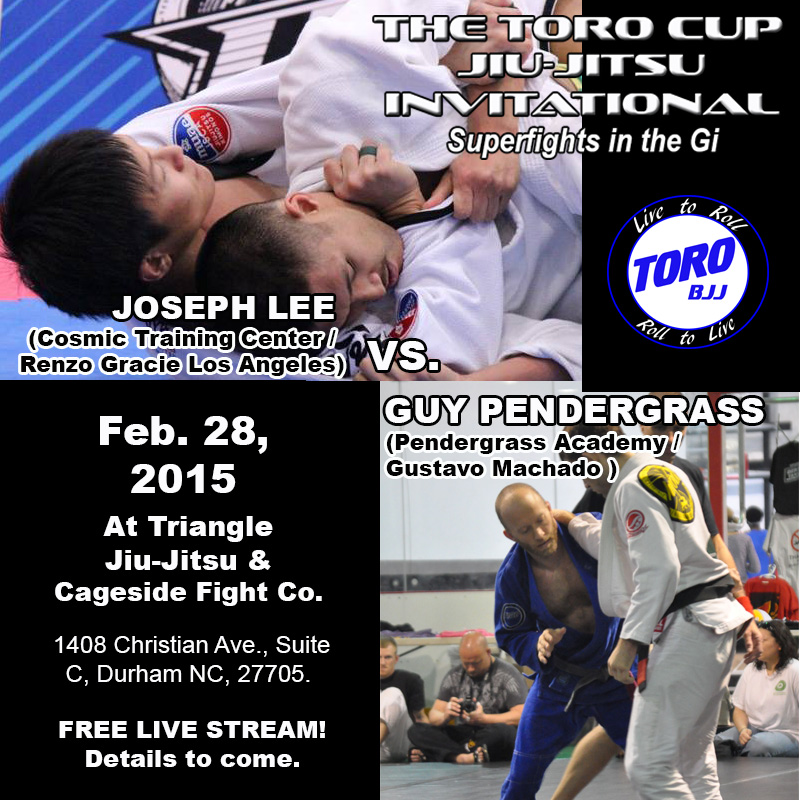
Coast to coast! Joseph Lee is coming out from Los Angeles for this one, and it should be great. Both Guy and Joseph have excellent transitions. I think there will be a lot of movement, a lot of flow between positions, and a lot of great technique. As someone roughly their size, I feel fortunate to have been able to roll with both of these guys: I’ve learned a lot from each of them, and this is one of the matches I’m anticipating most personally.
ASHLEY MCCLELLAND VS. CHRISTY “MACHINE” CHERREY
This is one of those matchups that worked out perfectly: two purple belts of similar size who have tons of competitive success in different tournament environments. I’ve trained quite a bit with Ashley McClelland, who has an excellent, well-rounded game, and competes regularly with US Grappling. Christy Cherrey does very well at NAGA tournaments and comes from a well-respected school at Team ROC Southern Pines, where she trains with Royce Gracie black belt Larry Hughes. Part of the reason for Toro Cup is to match up solid competitors who haven’t had the chance to compete against each other yet, and this is a good example. (I wanted to have half the card be composed of women’s matches, but it didn’t work out this time: there were some scheduling issues and some injury issues. But I’ve made a lot of contacts for next time, and I think it’s a reasonable goal.)
TIM MCNAMARA VS. STEVEN THIGPEN
This purple belt match should be both technical and action-packed. Tim McNamara is a very active competitor and a judo black belt who has great technique. (He also has a blog that is way better than mine). Steven Thigpen is a beast at both gi and no-gi grappling, is tough on top and from guard, and has excellent takedowns to boot. (He’s also one of my favorite training partners, although I don’t get to train with him as much as I’d like and he always beats me).
BRIAN MILLER V. DANIEL FRANK

Among the black belts I’ve talked to, this is a much-anticipated match. From Revolution BJJ in Richmond, Daniel Frank is one of the most dedicated practitioners and competitors out there. I love watching him compete and he was, actually, the very first person I approached to be on the card — so I’m glad we found him a tough and interesting match. Besides his considerable skills, Brian Miller has a unique style and unconventional approach that is somewhat reflected in the promo poster above. Oh, and I have a feeling you shouldn’t be late and miss the introductions.
JAY YOVANOVICH V. TRAVIS WHEELER
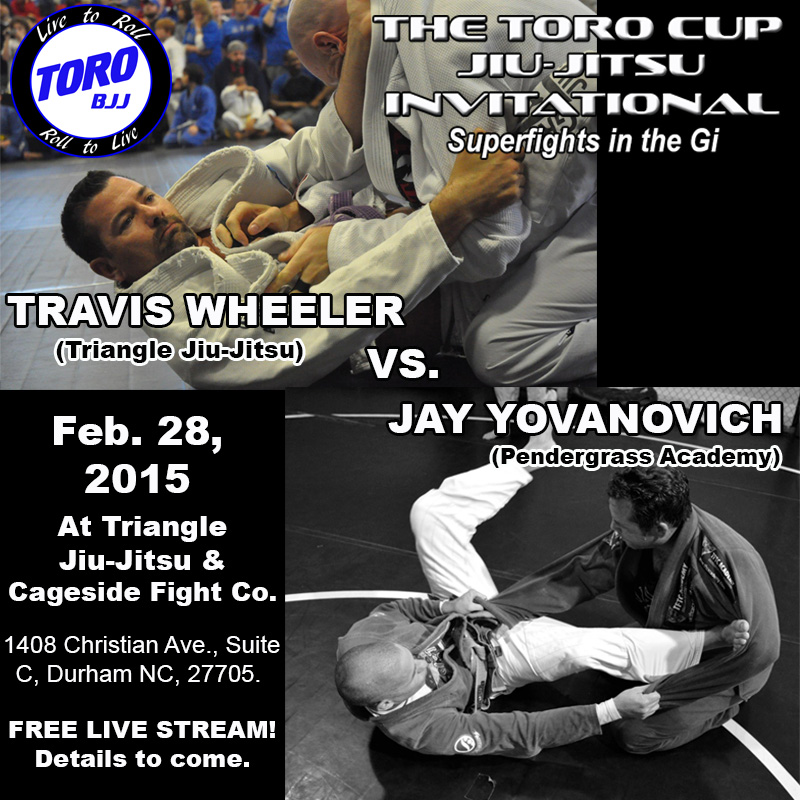
Of all the matches on the card, this is right at the top of my list to watch. I’ve trained with both Travis and Jay a lot, and both are very good — but what a contrast in styles. That’s what makes this intriguing to me: Jay’s approach features a lot of movement and judicious transitions. Travis’ forte, though, is preventing you from doing what you want to do while he methodically advances his position, trapping you into his game. One of these guys is going to force the other guy into his world, or adapt to what the other guy does best if he’s the one who gets forced.
JASON “BUMPKIN” WINGATE V. SEAN ZORIO
I’m also looking forward this contest between two very technical brown belts, one of whom (Jason Wingate from Gracie Raleigh) just got his fourth stripe. Since the Pendergrass Academy’s Sean Zorio got his brown belt last year, he’s competed quite a bit: it seemed fitting to match these two friends against each other for the Bumpkin Train’s return to competition.
C.J. MURDOCK V. ROGER CARROLL

CJ Murdock doesn’t have boring matches or fights. Roger Carroll doesn’t have boring matches or fights. This match will feature two tough competitors who love jiu-jitsu going at it to cap off the day, and I can’t think of a better way to end the first Toro Cup.
